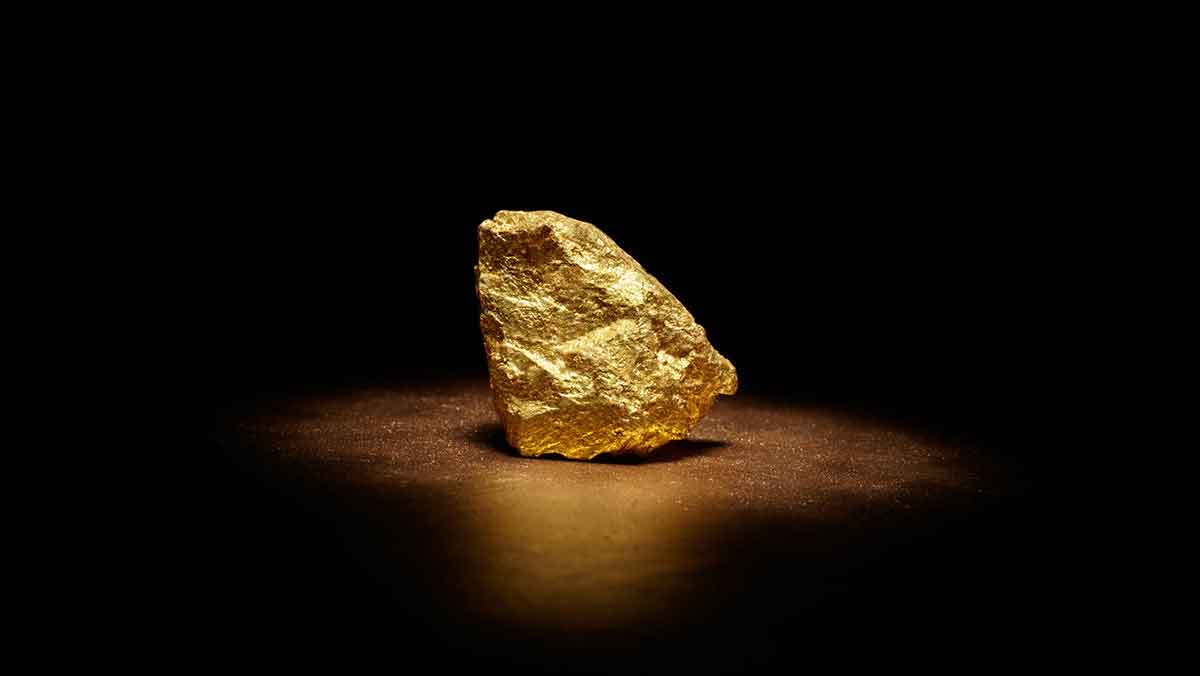There’s a graphene called ‘goldene’ and it could enable gold semiconductors to make green hydrogen

I don't have a picture of the thing itself, but it looks just like this, except really, really, really. really really flat. Pic via Getty Images.
Researchers in Sweden have cracked the code to making goldene, which is just like graphene, except it’s made from gold – and it has the potential to be a genuine gamechanger in many, many ways.
With an announcement that’s kinda flown under the radar this week, science people at Sweden’s Linköping University are reporting that they have finally cracked a golden puzzle that’s been stymying the lab coats for ages – and, in the process, turned humble old golf into a potential semiconductor.
(Ed: ‘Golf’?)
And all it took was the application of a centuries-old technique, perfected by Japanese blade makers to create their most eye-catching deadly weapons.
The importance of this breakthrough is hard to understate, as it has the potential to open up an entirely new use case for gold in applications such as hydrogen production, carbon dioxide scrubbing, communication and much more.
Here’s how a chance discovery and the combined work of Lars Hultman, professor of thin film physics at Linköping, and Shun Kashiwaya, researcher at the university’s Materials Design Division has led to a major breakthrough for semiconductor tech.
HOW AND WHY DOES IT WORK?
“If you make a material extremely thin, something extraordinary happens – as with graphene,” explains Kashiwaya. “The same thing happens with gold.”
Graphene, as a quick refresher, is an allotrope of carbon, made up of a single layer of atoms arranged in a hexagonal lattice nanostructure.
It’s awesome for stuff like electronics, energy storage, biomedical devices and a bunch of other stuff that’s nowhere near as sexy as the ones I listed.
Oh – it’s also super-important in the production of “green hydrogen”, using electrodes doped with graphene to reduce the amount of power required to produce the gas, thanks to its semiconductor properties.
“As you know, gold is usually a metal, but if single-atom-layer thick, the gold can become a semiconductor instead,” Kashiwaya says.
But getting gold to behave properly as a single-atom thick coating has been beyond the abilities of researchers, as Hultman explains, as gold – like other metals – has a tendency to ‘clump’, rather than organise itself into nice, ultra-thin sheets.
OLD WAYS TO MAKE NEW TECH
Professor Hultman says that he stumbled upon the traditional solution to the puzzle almost by accident, while reading about Japanese smithing.
“We had created the base material with completely different applications in mind. We started with an electrically conductive ceramics called titanium silicon carbide, where silicon is in thin layers,” he says.
“Then the idea was to coat the material with gold to make a contact. But when we exposed the component to high temperature, the silicon layer was replaced by gold inside the base material,” Hultman continued.
That phenomenon,called intercalation, resulted in a substance known as titanium gold carbide – which was awesome and everything, but left the researchers scratching their heads as to how they could apply it in real world applications through a process called exfoliation.
While puzzling it out, Hultman read about a substance called Murakami’s reagent, which Japanese smiths use to etch away carbon residue on the blades they make, leaving behind visually pleasing patterns on the steel.
“I tried different concentrations of Murakami’s reagent and different time spans for etching. One day, one week, one month, several months,” Kashiwaya says.
“What we noticed was that the lower the concentration and the longer the etching process, the better. But it still wasn’t enough.”
The team then ran into an issue which meant the process needed to be completed in the dark, as light caused a reaction within the reaction, resulting in the production of cyanide, which started eating the gold.
Eventually, using a reagent similar-but-different to the original reagent, the team was able to stabilise the reaction, and by adding a surfactant, stopped the sheets from curling up into tubes, creating a substance called goldene.
“The goldene sheets are in a solution, a bit like cornflakes in milk. Using a type of ‘sieve’, we can collect the gold and examine it using an electron microscope to confirm that we have succeeded. Which we have,” says Kashiwaya.
YES, BUT WHAT DOES IT MEAN?
So, this bit’s a little technical, but here goes: one of the major benefits of goldene over existing similar substances is that it offers entirely new properties to be exploited, due to the fact that the gold has two free bonds when two-dimensional.
This opens up the possibility of it being used in a range of applications, including “carbon dioxide conversion, hydrogen-generating catalysis, selective production of value-added chemicals, hydrogen production, water purification, communication, and much more”, according to the University.
And, if that’s not enough, traditional applications that require gold could potentially see the amount of gold required reduced quite significantly, with the application of single-atom films rather than thicker, more clumped-up coatings currently in use.
The researchers reckon that this is just the beginning for this breakthrough process, and have indicated that the next step in their part of this investigation is to start working with other “noble metals”, to see if the process works on those as well.

UNLOCK INSIGHTS
Discover the untold stories of emerging ASX stocks.
Daily news and expert analysis, it's free to subscribe.
By proceeding, you confirm you understand that we handle personal information in accordance with our Privacy Policy.








